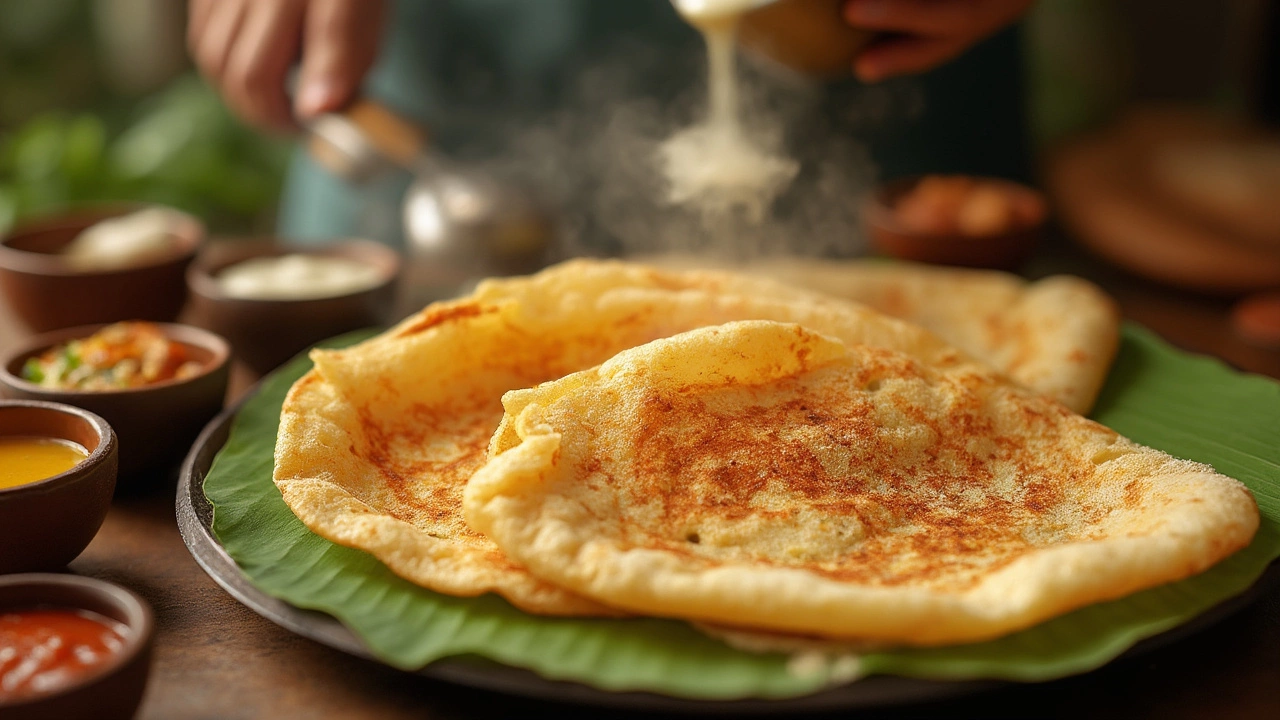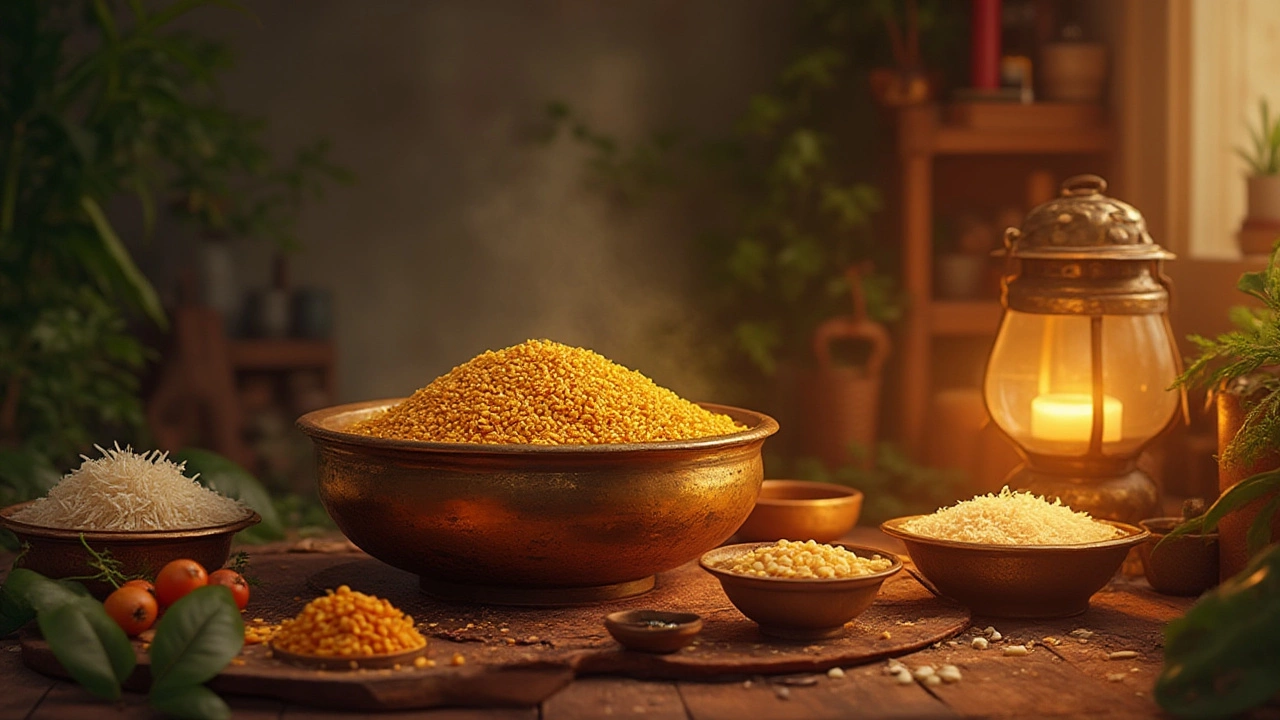Ever wonder why dosa batter sometimes just refuses to rise or turns out too thick, too runny, or just flat and lifeless? That’s usually the handiwork (or mischief!) of urad dal. This tiny white lentil might look boring, but when it comes to dosa, it’s a magician. The way you treat your urad dal, especially soaking it overnight, can make or break your dosa dreams. There are some handy kitchen hacks, and some deeply rooted kitchen myths, swirling around this age-old practice. So, let’s dig deep and see if giving urad dal a nice overnight soak is really the secret sauce for that golden, lacy dosa with the perfect ferment and irresistible crunch.
Why Urad Dal? Unlocking the Secret Power in a Simple Bean
Ask anybody who grew up watching dosa batters being ground on a heavy stone: urad dal is the soul of dosa. But why? Unlike many other beans and lentils, urad dal boasts a crazy-high protein and soluble fiber content. When soaked and ground, it releases a special kind of mucilage (a sticky, jelly-like substance) that’s magic for fermentation. That’s what gives dosa batter its fluffy fermentation bubbles, which in turn create soft, spongy insides and crisp golden edges when poured onto a pan. If you try making dosa without urad dal, you get something pancake-adjacent, but not really dosa.
Science agrees too. Soaking does more than just soften the dal for easy grinding. Enzyme activity gets revved up after just a few hours of soaking. Phytates (anti-nutrients that slow digestion and block minerals) start breaking down. Useful lactic acid bacteria, the backbone of dosa fermentation, start multiplying. It's like the seed of a yogurt culture for your batter. The longer and more deeply urad dal soaks, the more active these processes get. That’s why overnight soaking is the gold standard for dosa in most South Indian homes. But don’t just take grandma’s word for it—there’s real kitchen chemistry here.
People often get confused about the type of urad dal. Black whole urad dal has a tough skin and ferments differently, leading to a denser batter. Most dosa recipes call for white split urad dal, which is easier to grind and works best for soft, puffy, crispy dosas. That slight sheen and subtle fresh-bean aroma you smell after a proper soak? That’s your cue: the dal is ready to blitz into silken batter and whip up a killer dosa.
The Overnight Soak: Does It Really Matter?
So, the burning question—do you have to soak urad dal overnight? The simple answer: soak urad dal overnight for dosa, and you’ll rarely go wrong. Let’s break it down. The standard soak time, passed down for hundreds of years, is 6-8 hours. That’s long enough for moisture to seep all the way through, softening the dal and making it blend up into an impossibly creamy, elastic batter. The magic of soaking overnight is twofold. First, you get uniform softening, and second, you kickstart natural fermentation in a way that quick soaks just can’t.
Ask any street-food dosa vendor or watch home cooks at 5 A.M. prepping dosas before the city wakes up—they soak their dal the night before, no exceptions. Rushed soaks (the old “hot water in a hurry” trick) might seem tempting, but they come at a cost; shorter soak times mean less aeration, leading to denser, less fermentable batter. And when your batter doesn’t ferment right, every dosa comes out flat, pale, and bland. Real fermentation makes the flavor complex and even slightly tangy, a sign of a happy, healthy batter.
People living in cold climates often battle sluggish fermentation. Here’s a tip: add a pinch of methi (fenugreek) seeds while soaking. Methi not only flavors the batter but also speeds up fermentation, helping stabilize tricky climates. Some folks even use up to 10% more fenugreek in winter, just to spark activity! If your kitchen is very cold, put your soaked dal (with water) into a switched-off oven with the light on, or just wrap the bowl in a towel after soaking to trap warmth.
If you forget the overnight soak, there are desperate measures—hot water soaks for 2-3 hours, or even pressure cooking split urad dal briefly before grinding. But these hacks only work in emergencies and never match the batter from an unhurried overnight soak. Time does most of the work, with each hour unlocking more of urad dal’s fermentation superpowers.

Getting the Soak Just Right: Pro Tips and Common Mistakes
Not all soaks are equal. One rookie mistake: adding too little water. Always use enough water for the dal to stay completely submerged, with a few fingers’ width to spare. Dals swell up a lot overnight. Aim for about three volumes of water for one volume of dal—better too much than too little. If you spot your dal just barely peeking above the water by morning, top it up next time.
Cleanliness matters. Wash the dal in at least three changes of water before soaking, rubbing them gently between your fingers. This isn’t just about getting off surface dust. It triggers the dal to release surface starch, which helps achieve smoother, airier batter and cleaner fermentation. Don’t skip it.
Some cooks like to add a handful of poha (flattened rice) or cooked rice to the dal before grinding; this boosts the fluffiness of the final dosa, creating an airy lattice. If you’re grinding in a wet grinder (the gold standard in South India), use cold water to keep the batter cool and slow fermentation, avoiding any sour flavor creep before you’re ready. Most blenders (especially high-speed ones) heat up the dal while grinding and can kill off helpful bacteria, so pulse gently and rest the blender to keep things cool.
Another often-ignored tip: don’t throw out all the soaking water. This water often contains fermenting bugs that help seed your batter—even if slightly gray. As long as it doesn’t smell off, use some of it while grinding. If it’s slimey or has a strong musty aroma, discard and use fresh. Hygiene in summer is vital, as the warmer air can sometimes lead to mold or off smells; always use glass or earthenware bowls for long soaking, as steel can slowly impart a metallic note to sensitive fermenting batters.
If your dal soaks too long (think 20+ hours), sometimes it becomes over-fermented, smells almost alcoholic, and gives thick, sour batter. Avoid letting it go that long. 8-12 hours really is the sweet spot, and if the weather is very hot, 6 hours often does the trick.
After soaking, check that the grains squish easily between your thumb and forefinger. Don’t be tempted to skip the finger test: if they feel even slightly hard inside, soak longer. Grinding dal that’s not fully softened will only frustrate you and give a gritty, stubborn batter that never ferments well.
Soaking Myths, FAQs, and Creative Variations
Does salt go into the soaking water? No, that just slows down softening and fermentation. Add salt only after the batter is ground and before fermenting. What about hard water? If you live somewhere with hard tap water, use filtered or boiled and cooled water for soaking. Hard water minerals can hinder fermentation and change the dosa texture.
Ever heard that using older urad dal (several months past purchase) leads to tough, dull dosas? It’s true—fresh dal is best, and older stock can have broken starches, leading to flat, unfermented batter. If you’re unsure, always soak a tiny test batch and see how it bubbles and smells after grinding and fermenting overnight.
Wondering if you can skip urad dal or swap in another bean? Moong dal or masoor substitutes never get the classic flavor or structure of dosa. At best, you’ll end up with something tasty, but don’t expect miracles. There are specialty dosas like pesarattu (made with green moong), but that’s a style of its own. If you like experimenting, try mixing 10% black urad dal into white for extra depth, or add a handful of chana dal for nuttiness. But don’t skip the main star if you want dosa as most South Indians would recognize it.
If you’re thinking about nutrition, the long soak is a plus. Pre-soaking urad dal breaks down oligosaccharides, the stuff that leads to bloating or stomach discomfort. Soaked dal is easier to digest, especially after fermentation. It’s also higher in bioavailable protein and minerals, as the soak makes them easier for your body to absorb.
Want to save time on busy weekdays? Soak and grind a large batch, then freeze portions of the batter after fermentation. When you want a fresh dosa, just defrost, rest the batter at room temperature for 30 minutes, and cook away. Freshly ground batter is always king, but don’t be afraid to make your life easier when needed.
If you love a lacy, ultra-crisp dosa, aim for a slightly looser batter—that comes from proper soaking and lots of water. For softer dosas, reduce the water just a little. Play around until you find what fits your pan and your taste. With practice, you’ll tell by feel alone when your batter is “just right”—it should flow off a spoon like paint, not plop down in lumps.
The question “can we soak urad dal overnight for dosa?” isn’t just a yes/no checkbox—it’s a doorway into dosa mastery. The overnight soak unlocks hidden textures, flavors, and the promise of that glorious, golden dosa that’s worth leaping out of bed for. Next time you plan a dosa breakfast, don’t rush. Let time, water, and a little kitchen patience do their work. The reward is a dosa that sings with every bite.
